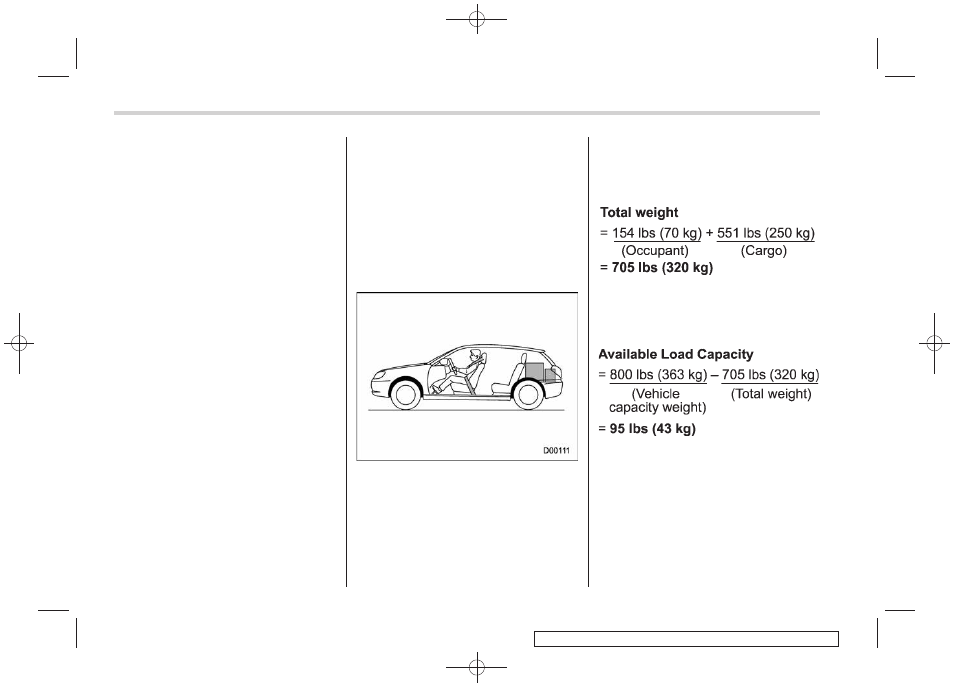Subaru 2007 Legacy User Manual
Page 423

Black plate (428,1)
北米Model "A2420BE-B" EDITED: 2006/ 7/ 26
13-8
Consumer information and Reporting safety defects
specification for the wheel nuts can be
found
“Flat tires” section in chapter 9.
& Vehicle load limit – how to
determine
The load capacity of your vehicle is
determined by weight, not by avail-
able cargo space. The load limit of
your vehicle is shown on the vehicle
placard attached to the driver
’s side
B-pillar. Locate the statement
“The
combined weight of occupants and
cargo should never exceed XXX kg or
XXX lbs
” on your vehicle’s placard.
The vehicle placard also shows seat-
ing capacity of your vehicle.
The total load capacity includes the
total weight of driver and all passen-
gers and their belongings, any cargo,
any optional equipment such as a
trailer hitch, roof rack or bike carrier,
etc., and the tongue load of a trailer.
Therefore cargo capacity can be
calculated by the following method.
Cargo capacity = Load limit
− (total
weight of occupants + total weight of
optional equipment + tongue load of a
trailer (if applicable))
For towing capacity information and
weight limits, refer to
“Trailer towing”
section in chapter 8.
! Calculating total and load ca-
pacities varying seating con-
figurations
Calculate the available load capacity
as shown in the following examples:
Example 1A
Vehicle capacity weight of the vehicle
is 800 lbs (363 kg), which is indicated
on the vehicle placard with the state-
ment "The combined weight of occu-
pants and cargo should never exceed
363 kg or 800 lbs".
For example, if the vehicle has one
occupant weighing 154 lbs (70 kg)
plus cargo weighing 551 lbs (250 kg).
1. Calculate the total weight.
2. Calculate the available load capa-
city by subtracting the total weight
from the vehicle capacity weight of
800 lbs (363 kg).
3. The result of step 2 shows that a
further 95 lbs (43 kg) of cargo can be
carried.
